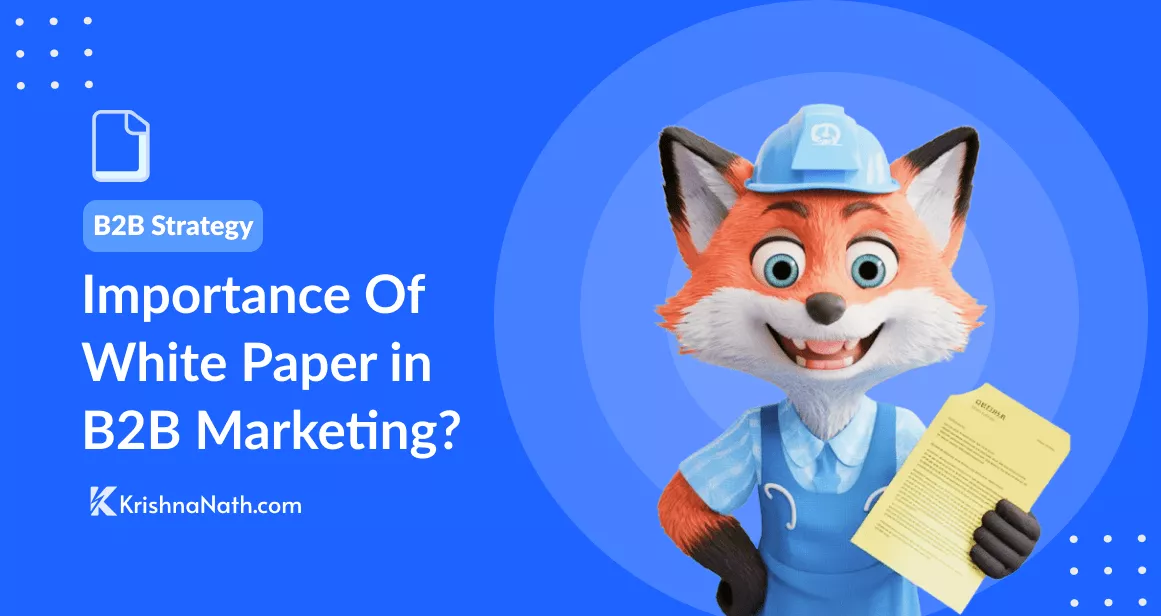Content marketing gurus call white papers “the King of Content,” and 63% of B2B companies consider them the most effective.
No wonder Michael A. Stelzner—the founder of Social Media Examiner and a white paper wizard—reveals their true power:

Today, the B2B market is like a red ocean where catching prospects with a single net is next to impossible.
Here white paper steps in as a sharp hook, pulling high-value leads and guiding them toward a decision.
The latest report shows that 55% of buyers give credit to white papers that helped them make their buying decisions.
Why are white papers so powerful tools, you ask?
It’s simple. They can contribute across all sales funnel stages (awareness, consideration, decision) and influence your potential customer to make a purchase.
Let’s dive into this article and see how you can also use different types of white papers to fuel your B2B sales funnel.
What is a White Paper?
A white paper is an in-depth, authoritative, and persuasive piece of report.
It educates, builds trust with your prospects, and pushes them closer to a decision. While delivering value, it nurtures leads, shortens the decision-making cycle, and powers B2B sales funnel growth.
Put simply, white papers are like the scientific papers of marketing – which don’t rely on vague claims or opinions.
Instead, it lays out facts, logical arguments, and real-world examples to prove a company’s solution is worth putting money in.
Brian Boys, a white paper pro, explained a white paper like this,
“A white paper is, number one, a report. Number two, it is written about a problem that’s pretty compelling for the reader. And then, number three, the author of the white paper generally identifies himself in the white paper.”
B2B businesses use white papers to educate professionals (decision-makers, stakeholders, IT heads). In action, white papers break down complex issues with actionable solutions and visuals.
They offer a deep analysis of a topic with challenges, opportunities, and present detailed solutions. And, the information is always supported by evidence.
Overall, it establishes your company as an industry expert, helps generate and nurture leads, and finally converts them into real customers.
Why is the White Paper Called “White Paper”?
The term “white paper” first came into existence in the early 20th century by the British government. Then, authorities used white-colored paper for formal documentation.
White color was selected as it reflects purity, clarity, and neutrality, which helped build its reputation and trust.
Over time, these documents went beyond government reports. They started covering business-related and technical documentation in many areas.
This helped them maintain their authority and credibility among their audience.
What Does a White Paper Look Like: Examples?
A traditional white paper looks like a long-form PDF.
It has several pages and deeply explores a topic through images, charts, graphs, and infographics.
Here is what a traditional white paper looks like:
Photo Credit: Dribble
That said, the appearance of modern-day white papers is taking shape with web-based content, videos, animations, live data, and other new ideas.
What are the Purposes of a White Paper?
The main purpose of a white paper is to nudge your leads and guide them smoothly along the sales funnel.
Let’s explore some benefits of white papers.
1. Generating qualified B2B leads
White papers are gated content that needs readers to provide contact details for access.
This approach pulls in leads while collecting their demographics, professional information, and user behavior.
Like this, white paper supports businesses to attract qualified leads and boost engagement with your company’s products or services.
2. Offering solutions to problems
White papers dig into industry-specific complex problems and offer solutions based on a data-backed approach.
Here is how white papers follow a logical approach to educate professionals.
- The layout of a white paper contains a Title page, Executive Summary, Introduction, Problem Statement, Solution Overview, Methodology, Results or Findings, Conclusion, CTA, and References.
- White papers point out the pain points of your target audience and look into the problems with insights.
- This resource uses research findings, surveys, and statistical data to stress the impact of the problem.
- The document offers solutions backed with real evidence in a neutral manner.
- This data-driven report applies visuals to break down complex topics. These visuals include bar charts, line graphs, pie charts, flowcharts, scatter plots, tables, heat maps, and diagrams.
3. Boosting the sales enablement process
In B2B marketing, sales enablement strategies are a systematic tactic. They supply sales teams with resources, tools, and content.
These strategies help move prospects through the sales process and close more deals.
Here, the white paper works like a toolkit for the sales team – helping them win over prospects and seal the deal. Let’s see how it helps:
- Address Client’s Concerns: White papers act as authoritative documents. They help sales teams go deep into potential clients’ issues with solutions. This builds trustworthiness.
- Highlighting Value Proportions: These documents dig deep into the benefits of your products and show how your offerings can solve prospects’ problems. Like this, they highlight value propositions and unique advantages of your solution.
- Supporting Buyers’ Journey: White papers guide your buyers by comparing your products with the competitors, highlighting their drawbacks and benefits. This unbiased approach improves ROI.
- Bridging the Sales Funnel Gap: White papers bridge the gap between marketing and sales efforts. They pull in leads and give sales teams the data-driven resources they need to turn those leads into customers.
How Does a White Paper Work in a Sales Funnel?

Imagine white papers as a Swiss army knife that can handle different tasks—cutting, screwing, opening bottles.
Likewise, depending on the funnel stages, a white paper can function differently. Below is a short overview.
1. Awareness stage: top of the funnel
The awareness stage is the first stage in a sales funnel, which is also known as “Top of the Funnel (TOFU)”.
It is an imaginary stage in a sales funnel where potential customers first discover your company. Here, the audience is unaware of your brand, products, and their problems.
This’s where the white paper takes the mic and becomes an educator. TOFU white papers usually educate your audience, provoke interest, and generate leads, without sounding promotional.
Best types of white paper for the awareness stage
- Industry Trends White Paper
Purpose: Provide emerging trends, technologies, or market changes.
- Problem-Solution White Paper
Purpose: Educate your audience about a problem they may be facing and present a solution.
- Data-Driven White Paper
Purpose: Offer fresh data, statistics, or survey results that reveal a challenge or opportunity.
- Myth-Busting White Paper
Purpose: Dispel common misconceptions and clarify misunderstandings in the industry.
- Educational White Paper
Purpose: Introduce a new concept, method, or approach in a simple way.
Goal: Generating leads and building awareness through educational and actionable content.
2. Consideration stage: middle of the funnel
At the Consideration Stage or Middle of the Funnel (MOFU), customers are aware of the problems. And, they are researching solutions and actively looking at different options.
At this stage, white papers become an advisor.
A MOFU white paper shows what works, what doesn’t. It goes deeper, actively answers prospects’ concerns with social proof, and guides them toward the best product (ideally, yours).
Best types of white paper for the consideration stage
- Solution Comparison White Paper
Purpose: Compare different tactics, technologies to solve a specific problem and help readers weigh options objectively.
- How-To or Practical Guide White Paper
Purpose: Give actionable steps or a framework to put the solutions into practice. Build trust by showing your expertise.
- Case Study-Style White Paper (Problem/Solution Format)
Purpose: Share real-world examples of challenges and how they were solved, using your product/service.
- ROI or Value Justification White Paper
Purpose: Point out how this solution could help the business get better results.
Goals: Nurturing leads and educating prospects while showing your products.
3. Decision stage: bottom of the funnel
The last stage in a sales funnel is the Decision Stage, also known as Bottom of the Funnel (BOFU).
This stage targets prospects who have already figured out their problems, researched solutions, and are now comparing specific products.
Here, white papers work like a closer in sales. It pitches why your specific solution is the best fit over competitors and eliminates final objections, and convinces prospects to make a purchase.
A bofu white paper is persuasive but fact-based, backed by data, ROI analysis, and testimonials.
Best types of white paper for the consideration stage:
- Product Deep Dive White Paper
Purpose: Go deep into your product’s features, functionality, and use cases.
- ROI Justification White Paper
Purpose: Prove the cost-effectiveness or value of your solution with data, savings, or performance metrics.
- Vendor/Competitor Comparison White Paper
Purpose: Offer a side-by-side comparison of your product vs. competitors.
- Technical Evaluation White Paper
Purpose: Address technical specifications, integration details, and compliance concerns.
- Customer Success Story White Paper
Purpose: Showcase real-world success through a detailed case study format.
Goal: Delivering persuasive data-driven content, addressing buyers’ concerns, and encouraging them to confidently buy your products.
How to Write White Papers That Engage Buyers at Every Funnel Stage?
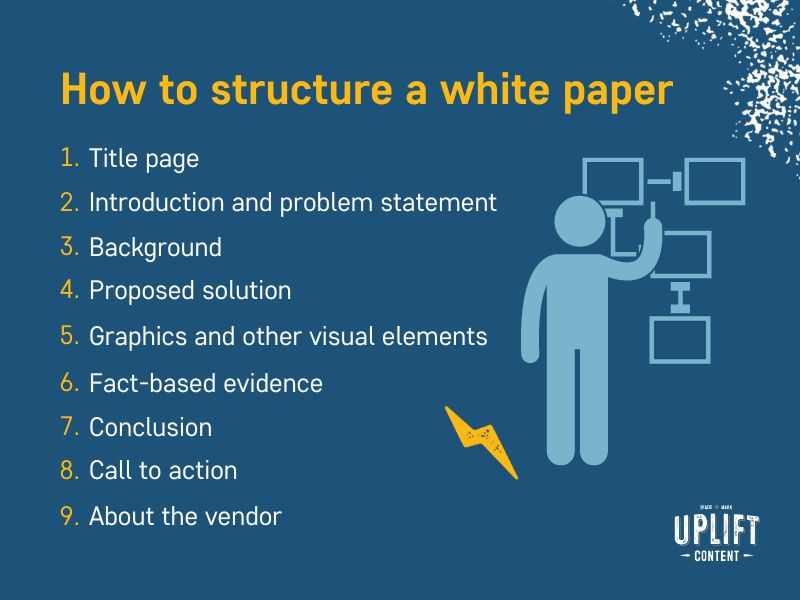
Photo Credit: Upliftcontent
See, white paper writing is different.
If a blog or case study is a movie trailer, a white paper is the full movie — complete with plot, research, and lasting impact. And, it goes beyond a generic explanation and logically presents a deep analysis.
Here is what Brian Boys says about the structure of a white paper:

Let’s explore their important elements.
1. Identify the target audience
To create an effective white paper, you need to have a clear profile of your ideal audience.
First, know your audience by understanding their problems, goals, and key demographics, such as age, gender, education, job, and geolocation.
By collecting demographic information, marketers and writers can meet their expectations.
For instance, technical documentation targeted at IT professionals requires more technical language than content for general business managers.
2. Engaging title

A title is the first thing a reader sees in a white paper.
So, if you make it strong and engaging, it communicates the core idea of a white paper and encourages readers to explore the content more.
Here are some steps to create one:
- Stress on tangible benefits using numbers, such as “5 proven strategies, reducing cost by 30%”,
- Make the title actionable,
- Maintain engaging language to spark interest,
- Include a subtitle to add extra context to the title, making it more appealing.
- Keep the title clear and short.
3. Executive summary:

The executive summary is like a book’s table of contents and introduction together that summarizes the main points, usually in 50–250 words.
It’s a one-page snapshot of the problem, solution, and benefits, designed to convince busy readers that the full document is worth their time.
Plus, it sets the tone for the rest of the document, making sure the reader knows what to expect in terms of depth and motivates them to keep reading the white paper.
The executive summary is the best for decision-makers who may not have time to read the full document.
4. Introduction
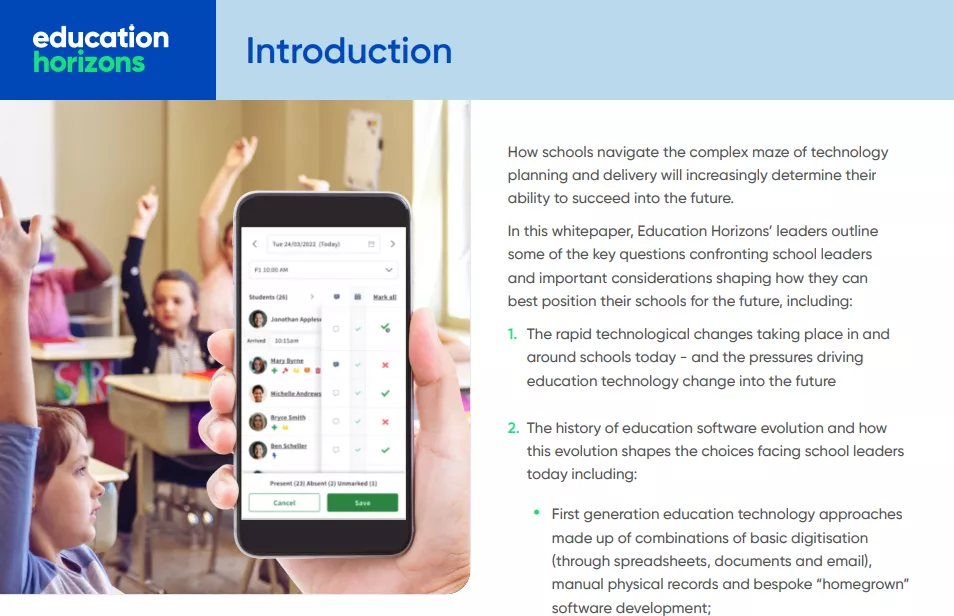
The “Introduction” of a white paper is like a first handshake that needs to be strong, clear, and engaging.
An attention-grabbing intro pulls the reader and tells them – “Here’s the issue we’re dealing with, and why it matters to YOU.” And, a good intro answers: “Why should I care?”
If it doesn’t, the reader might move on.
Usually, a strong introduction follows Dale Carnegie’s timeless rule:
“Tell the audience what you’re going to say, say it; then tell them what you’ve said.”
– Dale Carnegie
5. Problem statement

The problem statement is the foundation or emotional core of the white paper. It sets the stage by tapping into the reader’s pain points and creating urgency.
A well-crafted problem statement:
- deeply addresses the issues and struggles your readers are facing.
- It shows why the issue is important right now.
- Makes the issue urgent, keeping readers interested until they find the solution.
All in all, it connects the readers, ensuring the content benefits them, which leads naturally to the next element, the “Proposed Solution”.
6. Proposed solution
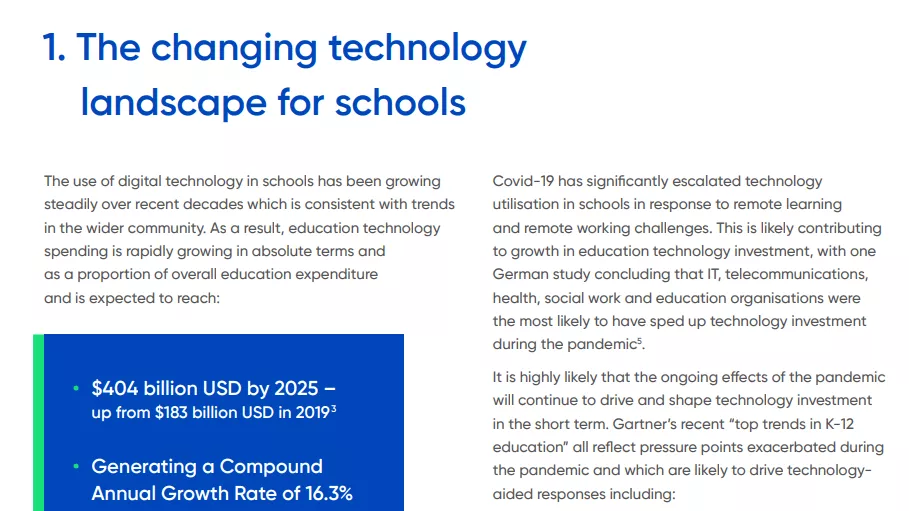
The proposed solution is the analytical core or the strategic heart of the white paper.
It explains the problem with data, proof, and insights promised in the problem statement.
Here is how this element contributes:
- Provide the solution straight, avoiding jargon,
- Communicate the values underlying the benefits,
- Details the unique features, comparing with the competitors,
- Backs the information with statistics and research,
- Includes visuals to make complex topics digestible.
Like this, the “Proposed Solution” section adds value and explains problems practically, convincing the readers.
7. Key takeaways
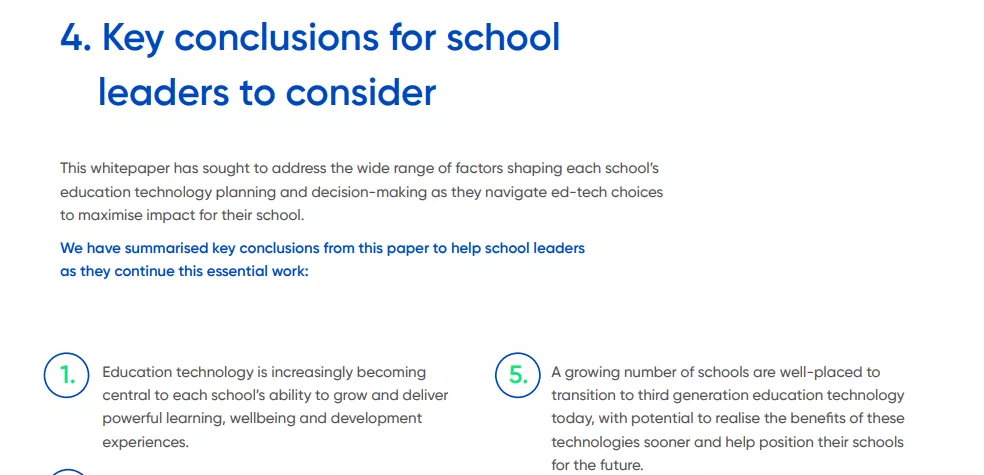
This part summarises the content with actionable steps that lead readers toward further engagement.
Busy readers like executives and decision-makers may skim the document. Clear takeaways ensure they get the main points quickly.
8. CTAs

A CTA (Call to Action) works like a bridge between interest and conversion. It tells the reader what to do next—sign up, book a demo, contact sales, etc.
Gordon Graham, a white paper wordsmith, says about CTAs,

A white paper with no CTAs means a sales pitch without an “ask”. It generates awareness but misses opportunities to capture leads or revenue.
To write effective CTAs
- Keep CTAs short, clear, and precise
- Make the next step specific and easy
- Adjust CTAs with the buyer journey
- Avoid Hard Sells or Direct Purchase Prompts
- Link to a Dedicated, Purpose-Driven Landing Page
CTAs allow marketers to reinforce the value of the white paper and influence readers to take action through CTAs.
9. References

Photo Credit: Elnacain
The last element is “References”, which supports your presentation and shows it’s trustworthy.
Citing reputable sources (industry reports, academic studies, expert opinions) proves the authority of your white paper.
Not only that, it backs data-driven arguments and encourages your readers to do further research.
Final Words
White paper empowers B2B marketers to generate leads, nurture prospects, and motivate business executives with evidence-based insights to overcome challenges.
Therefore, investing in professionally presented and deeply analyzed white papers can connect marketing strategies with sales goals. This strengthens the sales funnel and builds trust with your prospects.

